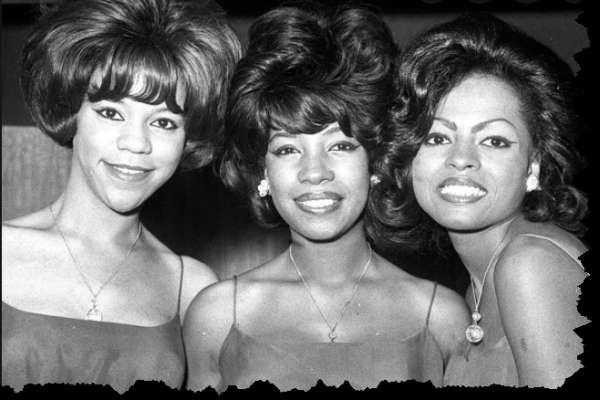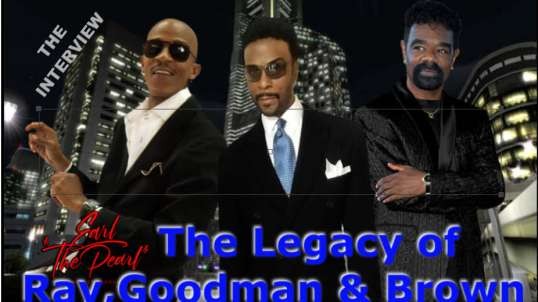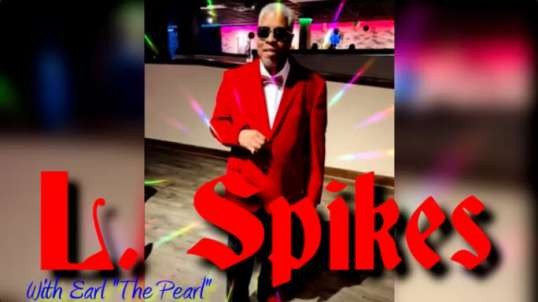By Holland Dozier Holland
The answer most Motown buffs will give you is two words: Nella Dodds. A 14-year-old would-be starlet, she auditioned for Scepter/Wand by singing along to the recently-released Where Did Our Love Go LP and boasting about her passable Diana Ross impersonation. With Baby Love all over the airwaves, Florence Greenberg reasoned: why not?
Wand picked what they saw as the LP’s most accessible track not yet used on a Supremes 45, Come See About Me, they worked hard to mimic the production, instrumentation and backing vocal arrangements of the Supremes’ original, and Dodds’ version hit the stores in early October of 1964. Berry Gordy went ballistic, demanding Motown release the Supremes’ cut as a single to squash Nella’s version; the result was a third straight Number One hit for the girls, while Nella Dodds’ record foundered. Denied her big break, Dodds went on to have a short music career with a couple of respectable hits, but she’s largely – and unfairly – been forgotten to history. The message is clear: don’t mess with Motown.
All of which makes sense, until you ask the crucial question: why? Why bother? I mean, “oh no, Nella Dodds might have taken a Jobete song up the charts, making an already-rich Motown incrementally richer” – is that the kind of thing that would have HDH quaking in their boots? Why would Motown be so keen to squash it? One possible answer is that they were planning to release Come See About Me as the Supremes’ next single, and Nella’s version might have stolen its thunder. But in real life, the Supremes would issue Stop! In the Name of Love just three months later anyway, so it’s difficult to envisage where Motown might have been planning to squeeze this hypothetical extra single into the schedules. No, more likely this was released for a simple reason: because no matter what the circumstances, Berry Gordy wasn’t going to let anyone take liberties.
The Supremes' second LP, which caused all the trouble. This was Motown's biggest-selling studio album of the Sixties; not bad for a 'no-hit' group.Berry had made much of his living chasing a buck wherever one might be found, and so it strikes a modern observer as a bit rich that he objected so strenuously whenever anyone tried to turn the tables. But object he did; Motown, who’d once been lucky not to have been sued into oblivion (by Scepter, of all people) for brazenly ripping off the Shirelles, now fired off lawsuits with alarming ease whenever they felt a copyright was being infringed. Perhaps the fiasco with Mary Wells’ very public walkout had stung Gordy’s pride. Perhaps it would have been too much to bear to see a Supremes song – a song he owned – climb the charts on the back of his hard work. (Dodds’ version, a passable but unexciting cover, surely wouldn’t have garnered much traction without America’s legion of newly-minted Supremes fans). Whatever the reason, Nella couldn’t be allowed to succeed. Not without a fight.
In the end, it wasn’t really a fight at all. Of the four singles released by the Supremes in 1964 (everyone forgets Run, Run, Run), this is probably the least immediate, the most conventional; it’s still undeniably brilliant, and leaving it on the LP would have been a real shame.
(One does rather feel for the Marvelettes, whose release schedule is now inadvertently synchronised with that of Motown’s biggest stars and their greatest in-house competitors, but them’s the breaks.)
It’s surprising to note that this is really the first “straightforward” verse/chorus pop song the Supremes have cut since teaming up with HDH – there are no big, ambitious changes, no complicated transitional phases, no cyclical structures. Not a bad thing, of course, but this is nonetheless a formula record. (Not to be confused with “formulaic”.)
There was no US picture sleeve, perhaps indicative of the rush job for this release; here's the French picture sleeve instead.It rode the crest of a wave to top the charts in the US, but in Britain – beyond the reach of Nella Dodds – there was a two month wait to follow up the big hit, and when Come See About Me finally appeared the following January its time was past, the single scraping the UK Top 30 for a week before disappearing forever. Americans know this as part of the Supremes’ majestic run of five straight chart-toppers; for Brits, whose sales-only singles charts have always disadvantaged tracks taken from already-released albums, it’s a little-remembered footnote. I’ll be very interested to see what you think of it, dear reader, and where it stands in relation to the rest of the pantheon of great Supremes hits. (You’ll find out what I think soon enough, if you’ve not already skipped to the end.)
It’s also surprising to note this was recorded before Baby Love, and indeed before the group knew they were going to be huge. There’s no lack of confidence on show here, and the band are tight and professional, but Diana’s vocal is a throwback to the days before Where Did Our Love Go, a touch higher in places than we’re now used to, a touch flatter. It works great for the song, which needs a high lead vocal to counter the relatively low bed of Flo and Mary’s call-and-response chimes, but I find it interesting that that probably wasn’t an intentional ploy, that that was just the way she sounded back then and so HDH, still unaware what was coming, having already cajoled and pushed her out of her range once already, now had to craft a song around her comfort zone.
Comfort, there’s the word I’ve been searching for. This is comfortable. Notwithstanding the much-lauded intro (a fade-in of incredible warlike drums leading to the trademark 4/4 foot stomp – a trademark already! – now augmented with a guitar riff accenting the rhythm with extra quavers on the first beat), this doesn’t challenge either the listener, the band or the group; it’s almost plodding in its relentless, grinding march, and you get the feeling it could continue exactly like this for another thirty minutes without going anywhere new.
Does any of that matter? Of course it bloody doesn’t. This is a cracking record, and if it’s not right up there with the very best, well, so what? It’s still a joy, another simple but addictive tune, a song full of great moments. A formula record, sure, but what a record – and, really, what a formula.
The lyrics don’t get any more cheerful, either; Diana Ross’ narrator again pleads for an errant ex-boyfriend to come back, and again she’s seemingly either unaware or unconcerned that she was getting the rough end of the deal to begin with (“I’ve given up my friends just for you / My friends have gone, and you have too / No peace shall I find / Until you come back and be mine”). But it’s not quite as wild a cry of desperation as Baby Love; rather, it’s a kind of mirror precursor to You Keep Me Hangin’ On, an acknowledgement that Diana can’t move on with her life until this issue is properly resolved:
I love that little rick in the way she stretches “uncertain” over four syllables. I love the two-note backing vocal chants from Flo and Mary (boo hoo!), not as slick as some later productions but sounding very good indeed compared to the rest of the Where Did Our Love Go LP. Really, this is just a fine record all through.
It’s the most classy, assured Supremes single to date, which is why I’m surprised it predates Baby Love; the clues are in the hints of the past, rather than any lack of confidence or belief. Diana’s voice isn’t exactly where it’ll soon be going, and yet she’s rarely sounded better, again fitting her performance to the song with devastating economy of emotion, again knowing precisely how much to let go and how much to hold back. She gets it right all the way through.
Tempting to wonder what might have come to pass had this not been a single (and a hugely successful one). After two massive hits (and a resounding flop just before) that had largely been sui generis, a Spector pastiche and two outlying heralds for a whole new sound, this scales everything back down a notch, pulls everything back in towards a more conventional model, a model that serves as a bedrock for nearly every great HDH/Supremes song for the next two years.
All the ingredients are here, not just that beat, that sound, but the mixture of “up” music and “down” lyrics (sometimes up, sometimes down indeed!), the dichotomy of Diana’s cold, dispassionate steely glare and her broken, begging desperation, and the basic structure of beautiful verse, killer chorus. They’re all here, and – thanks to Nella Dodds – they’re all at Number One. The next time we meet the Supremes, they’ll have moved out of reach of knockoffs and copycat artists, ready to begin their annus mirabilis of 1965. Next year belongs to them. This year hasn’t exactly been too shabby.









